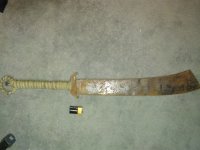corklabus
Full Member
In my local area there is some lost Civil War graves that have not been marked. Considering the "tabboo" of detecting near any type of interment, I'm looking for tips that would be beneficial in locating these places without causing any sort of disturbance. At least on my part anyway.
We have a pretty close idea what mountain side they are on and what headquarters they are near. My part is basically going to be visually locating possible sites and then convincing the Park Service to attempt the verifications by whatever means they have available.
All we want to do is at least give these forgotten men a grave marker out of respect for their sacrifice. I personally don't want to see them disturbed for identification purposes, but that would not be up to me unless I just didn't contribute to making the locations. But I feel these men deserve their recognition.
So......what possible clues could there be to look for in the woods and what time of year would be best if not early winter?
We have a pretty close idea what mountain side they are on and what headquarters they are near. My part is basically going to be visually locating possible sites and then convincing the Park Service to attempt the verifications by whatever means they have available.
All we want to do is at least give these forgotten men a grave marker out of respect for their sacrifice. I personally don't want to see them disturbed for identification purposes, but that would not be up to me unless I just didn't contribute to making the locations. But I feel these men deserve their recognition.
So......what possible clues could there be to look for in the woods and what time of year would be best if not early winter?





